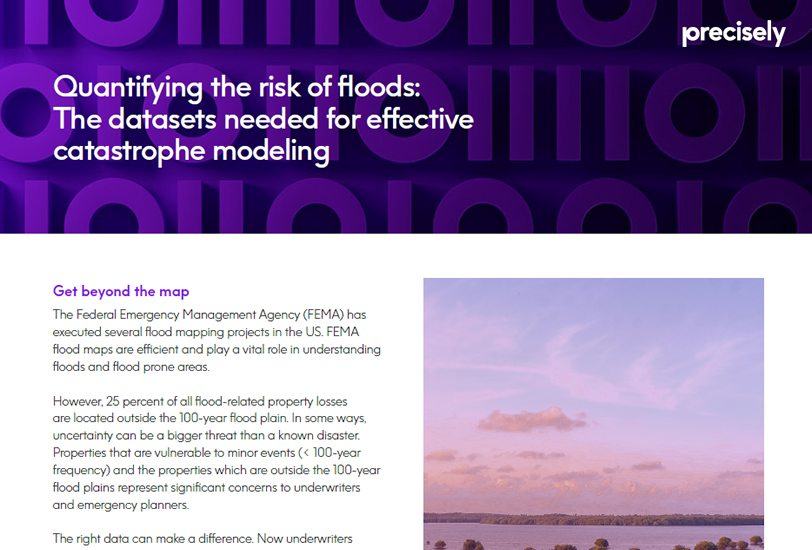White Paper
Quantifying the Risk of Floods: The Datasets Needed for Effective Catastrophe Modeling
Quantifying the risk of floods by getting beyond the map
The Federal Emergency Management Agency (FEMA) has executed several flood mapping projects in the US. FEMA flood maps are efficient and play a vital role in quantifying the risk of floods.
However, 25 percent of all flood-related property losses are located outside the 100-year flood plain. In some ways, uncertainty can be a bigger threat than a known disaster. Properties that are vulnerable to minor events (< 100-year frequency) and the properties which are outside the 100-year flood plains represent significant concerns to underwriters and emergency planners.
The right data can make a difference. Now underwriters and catastrophe modelers can rely on a suite of flood hazard input layers to build their models efficiently.
Floods and drought represent major catastrophes. To some extent, you can predict drought as you can rely on certain key indicators. Flood risk is different. Floods and flash floods may be caused by unpredictable rains, the breaking of dams, glacial outbursts, landslides and poor urban planning. Floods have caused nearly $10 billion in losses every year from 1970 –2011, with over $50 billion in losses in 2005, the year Hurricane Katrina reached shore. Although coastal flooding and river flooding are different in nature, they share common conditioning factors related to raising the water surface and inundation.
Underwriters, catastrophe modelers and disaster risk management specialists need to compute potential losses and mitigation measures for all different types of floods. Flood models need to consider not only perennial rivers and torrential rainfall, but also factors such as dams, reservoirs and urban drainage capacity. The recent flood damage in Chennai, India illustrates the gap that exists between flood models and reality.
A snapshot of the stream network for the State of Oregon is shown in Figure 03. The high-resolution dataset has a spatial resolution ranging between 3m to 5m and is available for the contiguous US. By linking all the aforementioned datasets, it is possible to derive the correlation between the factors that cause flooding in a given regional area. Such a correlation helps catastrophe modelers better understand the dynamics behind flood models so they can choose the right parameters.
